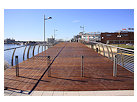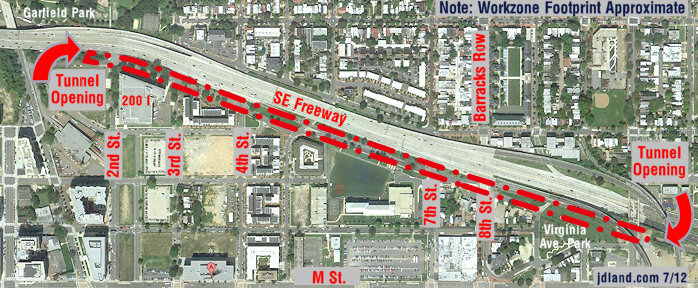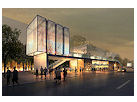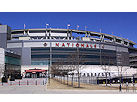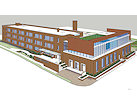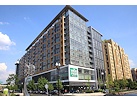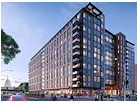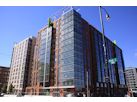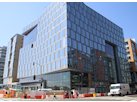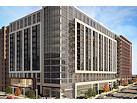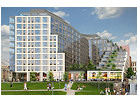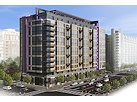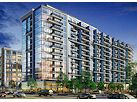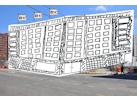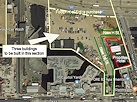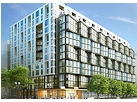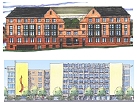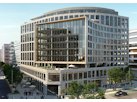|
| ||||||||||||||||||||
Please note that JDLand is no longer being updated.
peek >>
Near Southeast DC Past News Items
- Full Neighborhood Development MapThere's a lot more than just the projects listed here. See the complete map of completed, underway, and proposed projects all across the neighborhood.
- What's New This YearA quick look at what's arrived or been announced since the end of the 2018 baseball season.
- Food Options, Now and Coming SoonThere's now plenty of food options in the neighborhood. Click to see what's here, and what's coming.
- Anacostia RiverwalkA bridge between Teague and Yards Parks is part of the planned 20-mile Anacostia Riverwalk multi-use trail along the east and west banks of the Anacostia River.
- Virginia Ave. Tunnel ExpansionConstruction underway in 2015 to expand the 106-year-old tunnel to allow for a second track and double-height cars. Expected completion 2018.
- Rail and Bus Times
Get real time data for the Navy Yard subway, Circulator, Bikeshare, and bus lines, plus additional transit information. - Rail and Bus Times
Get real time data for the Navy Yard subway, Circulator, Bikeshare, and bus lines, plus additional transit information. - Canal ParkThree-block park on the site of the old Washington Canal. Construction begun in spring 2011, opened Nov. 16, 2012.
- Nationals Park21-acre site, 41,000-seat ballpark, construction begun May 2006, Opening Day March 30, 2008.
- Washington Navy YardHeadquarters of the Naval District Washington, established in 1799.
- Yards Park5.5-acre park on the banks of the Anacostia. First phase completed September 2010.
- Van Ness Elementary SchoolDC Public School, closed in 2006, but reopening in stages beginning in 2015.
- Agora/Whole Foods336-unit apartment building at 800 New Jersey Ave., SE. Construction begun June 2014, move-ins underway early 2018. Whole Foods expected to open in late 2018.
- New Douglass BridgeConstruction underway in early 2018 on the replacement for the current South Capitol Street Bridge. Completion expected in 2021.
- 1221 Van290-unit residential building with 26,000 sf retail. Underway late 2015, completed early 2018.
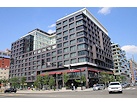
- NAB HQ/AvidianNew headquarters for National Association of Broadcasters, along with a 163-unit condo building. Construction underway early 2017.
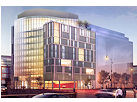
- Yards/Parcel O Residential ProjectsThe Bower, a 138-unit condo building by PN Hoffman, and The Guild, a 190-unit rental building by Forest City on the southeast corner of 4th and Tingey. Underway fall 2016, delivery 2018.
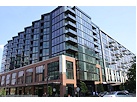
- New DC Water HQA wrap-around six-story addition to the existing O Street Pumping Station. Construction underway in 2016, with completion in 2018.
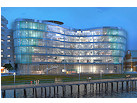
- The Harlow/Square 769N AptsMixed-income rental building with 176 units, including 36 public housing units. Underway early 2017, delivery 2019.
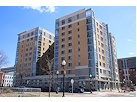
- West Half Residential420-unit project with 65,000 sf retail. Construction underway spring 2017.
- Novel South Capitol/2 I St.530ish-unit apartment building in two phases, on old McDonald's site. Construction underway early 2017, completed summer 2019.
- 1250 Half/Envy310 rental units at 1250, 123 condos at Envy, 60,000 square feet of retail. Underway spring 2017.
- Parc Riverside Phase II314ish-unit residential building at 1010 Half St., SE, by Toll Bros. Construction underway summer 2017.
- 99 M StreetA 224,000-square-foot office building by Skanska for the corner of 1st and M. Underway fall 2015, substantially complete summer 2018. Circa and an unnamed sibling restaurant announced tenants.
- The Garrett375-unit rental building at 2nd and I with 13,000 sq ft retail. Construction underway late fall 2017.
- Yards/The Estate Apts. and Thompson Hotel270-unit rental building and 227-room Thompson Hotel, with 20,000 sq ft retail total. Construction underway fall 2017.
- Meridian on First275-unit residential building, by Paradigm. Construction underway early 2018.
- The Maren/71 Potomac264-unit residential building with 12,500 sq ft retail, underway spring 2018. Phase 2 of RiverFront on the Anacostia development.
- DC Crossing/Square 696Block bought in 2016 by Tishman Speyer, with plans for 800 apartment units and 44,000 square feet of retail in two phases. Digging underway April 2018.
- One Hill South Phase 2300ish-unit unnamed sibling building at South Capitol and I. Work underway summer 2018.
- New DDOT HQ/250 MNew headquarters for the District Department of Transportation. Underway early 2019.
- 37 L Street Condos11-story, 74-unit condo building west of Half St. Underway early 2019.
- CSX East Residential/Hotel225ish-unit AC Marriott and two residential buildings planned. Digging underway late summer 2019.
- 1000 South Capitol Residential224-unit apartment building by Lerner. Underway fall 2019.
- Capper Seniors 2.0Reconstruction of the 160-unit building for low-income seniors that was destroyed by fire in 2018.
- Chemonics HQNew 285,000-sq-ft office building with 14,000 sq ft of retail. Expected delivery 2021.
897 Blog Posts Since 2003
Go to Page: 1 | ... 29 | 30 | 31 | 32 | 33 | 34 | 35 | 36 | 37 ... 90
Search JDLand Blog Posts by Date or Category
Go to Page: 1 | ... 29 | 30 | 31 | 32 | 33 | 34 | 35 | 36 | 37 ... 90
Search JDLand Blog Posts by Date or Category
A reminder that the inbound lanes of the Frederick Douglass Bridge will again be closed this weekend (from 10 am Friday, April 20 until before the Monday, April 23 morning rush hour). In May and June, the weekend closures will be shifted to the outbound lanes. And, of course, in July and August, the bridge will be shut down completely for Extreme Makeover: South Capitol Street, aka the demolition of the northern end of the bridge to allow for the bridge to arrive at ground level at Potomac Avenue.
Also, see my previous entry about various Earth Day-related activities around Near Southeast and the Anacostia River. Alas, my calendar has an unmoveable commitment for Saturday, otherwise I was all ready to make the Canal Park cleanup a JDLand meet-and-greet. But don't let that stop you from participating; and be sure to ask the organizers if you can help them move the school buses (heh heh).
|
|
The sudden whirlwind of demolition in Near Southeast continues, as today work started on bringing down the Nexus Gold Club, but not until after the bulldozing of its neighbor, the old Four Star Cab brick townhouse at New Jersey and K (whose own neighbors were demolished almost exactly a year ago). This block will be home to 909 New Jersey Avenue, JPI's 230-unit residential tower; it should be noted that the A1 Tires garage on the southwest corner of the block (at 1st and K) shows no sign of selling out to JPI, so it appears for now that 909's residents will have no problem getting car repairs. (Glass half full!)
In the meantime, across the way, demolition proceeds apace on Square 699N, as all buildings along 1st Street between K and L have now been brought down, including the festive gold, green, white, and cranberry garage on the corner of 1st and L. Only Food and Friends and Edge/Wet remain standing; if you have respects to pay to them or the Nexus, you'd better do it tonight or tomorrow morning.
All this means three new entries on my Demolished Buildings page, with space being saved for Nexus and the others. And as soon as Mother Nature remembers that it's April and not November, I'll post pictures of the new streetscapes.
|
|
Friday's Washington Times has an update on some of the owners of the land taken via eminent domain in 2005 to make space for the new Nationals ballpark. Sixteen of them refused to take the city's offer and are still in court over what the payments should be--and it doesn't look like it's getting resolved anytime soon. The story tells how many of them have been unable to find new locations or are struggling with smaller lots than before.
|
More posts:
Nationals Park
|
This weekend has not lent itself to photography, but my schedule is going to be tight for the next couple of weeks and I couldn't bear to go a month between ballpark updates. So you can check out the latest updates to the Stadium Construction Gallery--I didn't update the entire set, because some of the shots on the southeastern side of the ballpark aren't changing as much now, so why replace pretty blue-sky shots with dreary overcast facsimiles? But I did also add some new "stitched-together" before and afters, to show panoramic shots of various intersections around the site. I'm not sure whether these will become a permanent fixture (the fish-eye distortion on some is a little disconcerting), but given what I had to work with weather-wise, at least it's something a little different. I also added more pictures to the Square 699N page, as demolition continues there. You can also of course browse the  Photo Archive to see additional photos of intersections and vantage points you're interested in, or you can look at all photos I've posted from yesterday and then click on the intersection/angle to see the complete archive for that view. And let's hope the sun returns eventually. And we've also got Demolished Buildings #127 and #128.
Photo Archive to see additional photos of intersections and vantage points you're interested in, or you can look at all photos I've posted from yesterday and then click on the intersection/angle to see the complete archive for that view. And let's hope the sun returns eventually. And we've also got Demolished Buildings #127 and #128.
 Photo Archive to see additional photos of intersections and vantage points you're interested in, or you can look at all photos I've posted from yesterday and then click on the intersection/angle to see the complete archive for that view. And let's hope the sun returns eventually. And we've also got Demolished Buildings #127 and #128.
Photo Archive to see additional photos of intersections and vantage points you're interested in, or you can look at all photos I've posted from yesterday and then click on the intersection/angle to see the complete archive for that view. And let's hope the sun returns eventually. And we've also got Demolished Buildings #127 and #128.
|
|
A few articles to note in the latest neighborhood newspapers--nothing really new in them (especially if you stop by here with regularity), but they might be good roundups for people who haven't been following along closely. The April Hill Rag has a profile of Capitol Quarter, the mixed-income townhome component of the Capper/Carrollsburg redevelopment. And the latest Voice of the Hill has "Stadium Parking Plan is 'Managed Chaos'", covering last month's stadium Transportation Operations and Parking Plan meeting and the reaction of local residents and leaders. My notes from that meeting are here, and my Stadium Parking page has the meeting's presentation slides from Gorove/Slade, DDOT, and WMATA.
|
|
A reconaissance mission through the Hood today yielded a lot of new tidbits; click on the links for project details and new photos added to the Archive:
* The "branding" of The Yards has begun, with huge signs now hung from the old Gun Assembly Building on M Street east of 4th;
* The new stoplights along M Street at New Jersey and at 4th are now flashing red, no doubt to be turned on Any Minute Now with the impending start of DOT HQ move-ins (next week?);
* Demolition on Square 699N has crept along K Street from its starting point at Half and K, and has now made it to the corner of 1st and K; this means that there are three new additions (124-126) to my Demolished Buildings gallery; and
* Gas has skyrockted in the last month (yes, the infamous Gas Prices tracking page is back!).
(UPDATED to fix a lot of stupidly broken links.)
|
More posts:
1015 Half, Factory 202/Yards, Retail, square 697, Square 699n, Velocity Condos, The Yards
|
Wasting no time, the Zoning Commission has scheduled for May 21 the public hearing on Case 07-08, the request to allow temporary surface lots at various locations within walking distance of the stadium. Note that some of the stadium parking and transportation items in the news and on the web these days are pretty chock full of misassumptions, misinformation, and misunderstandings, so do yourselves (and my blood pressure) a favor and read for yourself the various source documents and meeting notes I've posted, look at the map, do a little critical thinking, and try not to yell "The sky is falling!" just yet. (If we're staring at the same information in September or October, then we can all chant it together.)
Just a reminder, for the next two weekends (April 13-16 and April 20-23), the inbound/northbound lanes of the Frederick Douglass Bridge will once again be closed between 10 am Friday and 4 am Monday. Read DDOT's initial release on the project or my last entry on it for the hows and the whys, and see my page with additional info and photos on the lowering planned for the northern end of the bridge over the summer.
|
|
Some very brief Near Southeast-related updates from two ANC meetings this week (I wasn't in attendance at either, so these are just quick summaries I received from Other Parties): At ANC 6D on Monday, the commissioners voted 3-2-2 to oppose a zoning special exception request (waiver of the rear yard requirement) for the planned office building at 1111 New Jersey Ave., the Donohoe project on the west side of New Jersey between L and M (on top of the eastern Navy Yard Metro station entrance); the Board of Zoning Adjustment hearing is on May 8. As always, the biggest sticking point appeared to be battle between the ANC's we-want-a-community-benefits-package-in-return-for-our-support stance and the developer's this-is-a-matter-of-right-project-we-don't-have-to-give-you-anything stance. (And you wonder why I avoid these meetings like the plague.)
Meanwhile, over at ANC 6B (which is in charge of the sliver of Near Southeast around 8th Street/Barracks Row), the process is beginning about the possibility of razing the abandoned beige apartment building on Potomac between 8th and 9th and replacing it with a new four-story building with ground-floor retail and two levels of underground parking (though this is still just in the conceptual phase and may not be the final plan). A raze permit has been applied for, but because this small section of Near Southeast is part of the Capitol Hill Historic District, the Historic Preservation Office will be involved in the process. More later, I'm sure.
|
More posts:
1111 New Jersey/Insignia on M, 816-20 Potomac, ANC News, 8th Street, Square 743N, zoning
|
Last night's Zoning Commission meeting had four Near Southeast items on the agenda; we can start with the easy one and say that Case 06-25, the latest batch of text amendments to the Capitol Gateway Zoning Overlay, was given final approval. Next, the expected final vote on Case 06-41, the new residential project at 1325 South Capitol Street, was delayed because of some procedural issues that went way above my head and that now require a special public meeting to sort out (which will probably be in the next six weeks). But the item of greatest interest is Case 07-08, the request for zoning changes that would allow temporary surface parking lots on certain blocks within range of the Nationals ballpark. It had been brought as an emergency request because of the time sensitivity of needing to get the lots built before the weather gets cold again (if it ever gets warm first!!!), meaning that the rule could have gone into effect immediately (with hearings to make it permanent within the next 120 days), but the commissioners balked at the idea, saying that too many emergency requests are coming down the pike these days that don't really deserve the special treatment. They did agree to an expedited hearing date (one that only needs to be advertised for 30 days), but there is clearly some concern amongst the commissioners about the whole idea, with one of them rightly asking to make sure that the rule prohibits any non-commercial use of the lots (like for trash truck parking or other industrial-type uses). So, be prepared to read plenty more about this in coming months, and read my previous post on the zoning request for more details, which includes links to the Office of Planning report on the request.
|
|
I've added updated photos of the Near Southeast vista from the Southeast Freeway (don't worry, I wasn't driving at the time) to the Photo Archive--I have one shot going back to 2000, when the only new buildings were still under construction (300 M and 80 M), so it's a festive comparison to today, with four additional developments completed and the ballpark now visible as well. And I did post some new "after" photos from Van and from Half of the demolition across on N Street from the stadium.
|
More posts:
Monument Valley/Half St., Monument/South Capitol St.
|
It should be noted that work has now begun on the parking garage on the northwestern edge of the Nationals ballpark site (between Half and South Capitol, south of N). Pile driving is underway (clang....clang....clang) and the site is being excavated. You can get a feel for it from the Stadium Construction Webcam #2 (lower right-center), or get a wonderful view of basically nothing (the piledriver is at center) in this shot I took today of the southwest corner of Half and N. (I also took there's-no-more-there-there shots of what used to be the Good and Plenty Carryout site on the northern side of this intersection as well--see today's vista compared to shots from the past few years, looking to the west, northwest, and north.)
|
More posts:
parking, Nationals Park
|
On April 9, the DC Zoning Commission will be entertaining Case 07-08, an emergency request to allow for changes to the Capitol Gateway Zoning Overlay to allow for the construction of temporary surface parking lots--to last no more than five years--on certain squares within Near Southeast. There is also a companion case, 03-12E/03-13E, specifically requesting a minor modification to the Capper/Carrollsburg zoning orders to allow surface parking lots on four squares within Capper--the three blocks bounded by 2nd, I, M, and 3rd (next to Canal Park) and on Square 882, the current home of the old Capper Seniors building, which is expected to be demolished this summer.
I'm not going to go into great detail, because I need to pace myself on the subject of parking or else I will pop a vein before Opening Day. But here's the gist: the city and the Nationals want to be able to build temporary surface parking to handle the estimated 3,800 cars that will need parking beyond the 1,225 spaces on the stadium site. These lots will be available as public parking during non-event times (so you DOT workers who want to drive to work should be paying close attention). This zoning request covers certain squares directly around the stadium and at Capper; apparently there will be a subsequent submission requesting similar amendments to the Southeast Federal Center Overlay to allow surface parking there as well.
As to why the Office of Planning is supporting this request, here's a quote from their report to the Zoning Commission (emphasis mine): "Although much of the parking needed to serve the Ballpark's patrons will eventually be accommodated by parking within nearby future buildings, these buildings will not yet be constructed when the Ballpark opens in 2008. While OP strongly encourages the use of mass transit and encourages the Nationals to provide meaningful incentives for the use of mass transit and other alternatives to the private automobile, OP shares their concern that a short term shortage of parking available to patrons could lead to illegal parking on streets and private property in the surrounding area, and could have an impact on the short term success of this important District facility. This proposal would help to address the short term need for an interim parking solution."
And, another OP quote (again, emphasis mine): "Normally, OP is not supportive of surface parking lots. In addition to being a poor use of the District's valuable land base, extensive surface parking lots disrupt neighborhood fabric; can be a source of crime, noise, trash, and light-spill; encourage the use of the private automobile over other less environmentally damaging forms of transportation; and contribute significantly to storm water run-off water pollution problems facing our great river systems. OP would not support surface parking on these squares as a permanent use to address currently perceived parking need."
For more background and explanation of OP's stance, I strongly suggest reading the OP report (specifically the last four pages).
And, against my better judgment, I have created a new Planning for Stadium Transportation and Parking page, pulling together the various documents that have been released recently (mainly from last month's TOPP meeting). I've also thrown together a map that is nowhere near official marking what I understand to be various possible locations for stadium parking. It will change as time goes on, and do not take it as gospel, but it does show which sites come under this zoning request, along with other possible sites. Opening Day is still a year away, and there will be much jawboning on this subject over the coming weeks and months. So, everyone take a deep breath, keep an eye on updates as more information gets released, and try not to panic too far ahead of time.
And remember that every organization in town really wants you to take Metro.
UPDATE: And with fine timing, Near Southeast's councilman Tommy Wells has just announced the creation of a new transportation task force for Near Southeast and Southwest, bringing together representatives of the government, residents, and developers to address the concerns of neighborhoods facing not only baseball, but also the coming influx of thousands of new workers and residents.
At last, I've gotten the word on what's coming on Square 699N, the block bounded by Half, K, L, and 1st, owned by the Cohen Companies and the former home to nighclubs Wet, Edge, and Club 55, and a series of other small businesses. After what apparently was quite a ride through the DC raze permitting process, they are planning to begin exvacation in July for Phase I of their project (called "Velocity"), which will be a 200-unit condo building on the northwest corner of 1st and L; it will be delivered in late 2009, and will have retail as well. Phase II will be a "mirror-image" 200-unit condo building, at Half and K; Phase III is not yet written in stone, could be an office building, but will depend on What the Market Will Bear. (The three levels of underground parking for both condo buildings will be constructed during Phase I.) There will be a web site coming in May, and then in June a "state of the art" sales center will be opening at Half and K, so before long we should get some renderings of what it's all going to look like. In the meantime, demolition continues, and when we get a bright sunny day where it's not 40 below, I'll post some updated photos.
|
More posts:
Square 699n, Velocity Condos
|
The in-development Business Improvement District for Near Southeast (which they're branding as "Capitol Riverfront", though I currently remain unconvinced) has posted its Operating Plan and Draft Bylaws, after having released their Executive Summary a few weeks back. The Operating Plan sets out how they plan to address the areas identified as the biggest needs in the neighborhood: Clean, Safe, Marketing PR & Branding, Business Development, Infrastructure Development, and Community Building. In other words, the streets will be clean before Nats games and trash cans will be installed, fear not! Note that the BID still needs to get buy-in from neighborhood commercial property owners, and go through the legislative process and get approval from the city council before being officially created.
|
More posts:
Capitol Riverfront BID
|
It didn't take long this morning for the last three standing buildings between N and Van streets across from the ballpark to get taken down--the two rowhouses at 30 and 32 N are gone, and as of this moment the Good and Plenty Carryout at 36 N is in mid-demolition (the Clark Stadium Construction Cam [Camera #2] continues to provide birds-eye views of this work). So now we have Demolished Buildings #120-122; you can also see what this stretch of buildings has looked like over the past few years (up through yesterday evening) from Van and from Half. And I imagine I'll be back later today with an update on the progress of Square 669N's demolition.
UPDATE, 1:01 pm: I can also report that the Club 55 building, on the Square 669N site just east of the Half and K intersection, is now Demolished Building #123.
|
|
It's a demolition two-fer today--in addition to 26 N Street being knocked down on the Monument Realty land just north of the stadium, I was a little surprised to find that the wrecking crews started work today on Square 699N, taking down the red brick building/loading dock at Half and K (exposing some of the interior of Club 55) as well as the northwesternmost portion of the Edge/Wet building. You can see also at the top of my Square 699N page a well-timed shot of the entire block before demolition started, taken yesterday morning from the top floor of 20 M Street. And we've now got Demolished Building #119. I imagine the rest of the block is going to go pretty quickly. And then perhaps Mr. Cohen will tell us a bit more about what he's got planned for the site, beyond "mixed-use/office/condos."
|
More posts:
Square 699n, Velocity Condos
|
I wasn't expecting this one just yet, but today the red brick building at 26 N Street has been demolished (flip through the Stadium Construction Camera images from Camera #2 starting at 8:40 am to see it disappear); it was home for many years to the Patent Reproduction Company, until a deal was made by Monument Realty in August 2005 to purchase it for $3 million (see Post and WBJ articles from the time of the sale). This site is directly across from the stadium, but is not part of Monument's first phase of development in the area (which is in Square 701 on the east side of Half Street--the demolished building is on the west side, in Square 700 at Van and N streets); Square 700 redevelopment will probably not begin before 2009. But I'm guessing there might be some stadium parking made available on the north side of N between South Capitol and Half in the meantime. And 26 N has now been enshrined as #118 in my Demolished Buildings gallery; I imagine its neighbors (including the Good N Plenty carryout) are in their last days as well.
|
More posts:
Monument Valley/Half St., staddis
|
From the Spring 2007 newsletter of the Washington Humane Society (hat tip to reader Chuck): "As if being the largest Spay/Neuter Clinic in the Metropolitan area was not already enough, in June 2007, the Washington Humane Society will unveil the first ever low-cost Regional Spay/Neuter Center, created specifically to service the entire DC metropolitan area. The new facility will be named the National Capital Area Spay and Neuter Surgical Center. The current low-cost Spay/Neuter Clinic is located on Georgia Avenue in Northwest and will move to Capitol Hill, 1001 L Street, SE to a facility that is nearly four times the size of the current location. [...] The new National Capital Area Spay and Neuter Surgical Center will provide an average of fifty sterilization surgeries on both dogs and cats every day, five days a week." This is the building at the corner of 10th and L that has been being rehabilitated over the past few months. No word on whether Bob Barker will be making appearances in the Hood. UPDATE: Here's the building at 1001 L Street--definitely looks like it's getting prepped for occupants.
|
|
With thanks again to DDOT, I now have all of the slide presentations from last week's public meeting on the stadium Transportation Operations and Parking Plan (TOPP). The new ones are the WMATA Slides on Navy Yard Station Upgrade and the DDOT Slides on Douglass Bridge/Other Improvements. The documents I posted last week were the slides by Gorove/Slade describing about the TOPP; with maps and charts listing expected transit/auto/pedestrian traffic volume and flow; an FAQ on parking, traffic, and other issues for Southwest and Near Southeast residents; an FAQ on the Douglass Bridge improvements going on over the next few months; and DDOT's display boards with information on the plans for the South Capitol Street corridor and other regional traffic issues.
Repeating what I said last week: If you live in Southwest, or Near Southeast, or Capitol Hill, or Anacostia, or even Prince George's County, or if you're a baseball fan planning to come to the games, I suggest taking a close look at these.... (Some of them are kind of big files, be patient if they take a moment to load.) Comments can be sent to the the DC Sports and Entertainment Commission, and cc ANC 6D (office@anc6d.org) so that the ANC can track the feedback. And read my summary of the main bullet points from the meeting. Let's not all wait until March 2008 to suddenly figure out that there's a new baseball stadium at South Capitol and Potomac that has 40,000 fans trying to get there.
|
More posts:
ANC News, Metro/WMATA, parking, South Capitol St., Douglass Bridge, staddis, Nationals Park, Traffic Issues
|
897 Posts:
Go to Page: 1 | ... 29 | 30 | 31 | 32 | 33 | 34 | 35 | 36 | 37 ... 90
Search JDLand Blog Posts by Date or Category
Go to Page: 1 | ... 29 | 30 | 31 | 32 | 33 | 34 | 35 | 36 | 37 ... 90
Search JDLand Blog Posts by Date or Category



